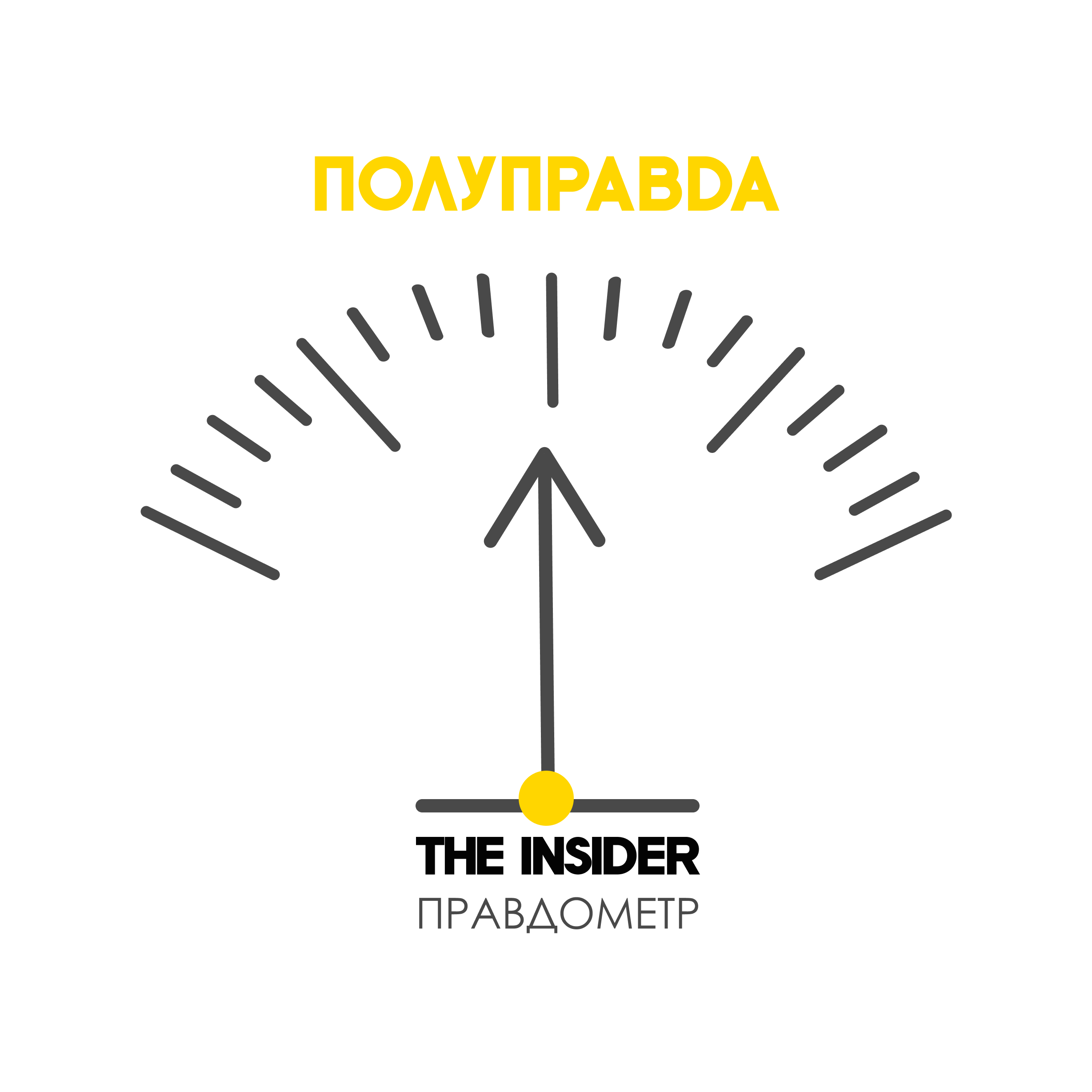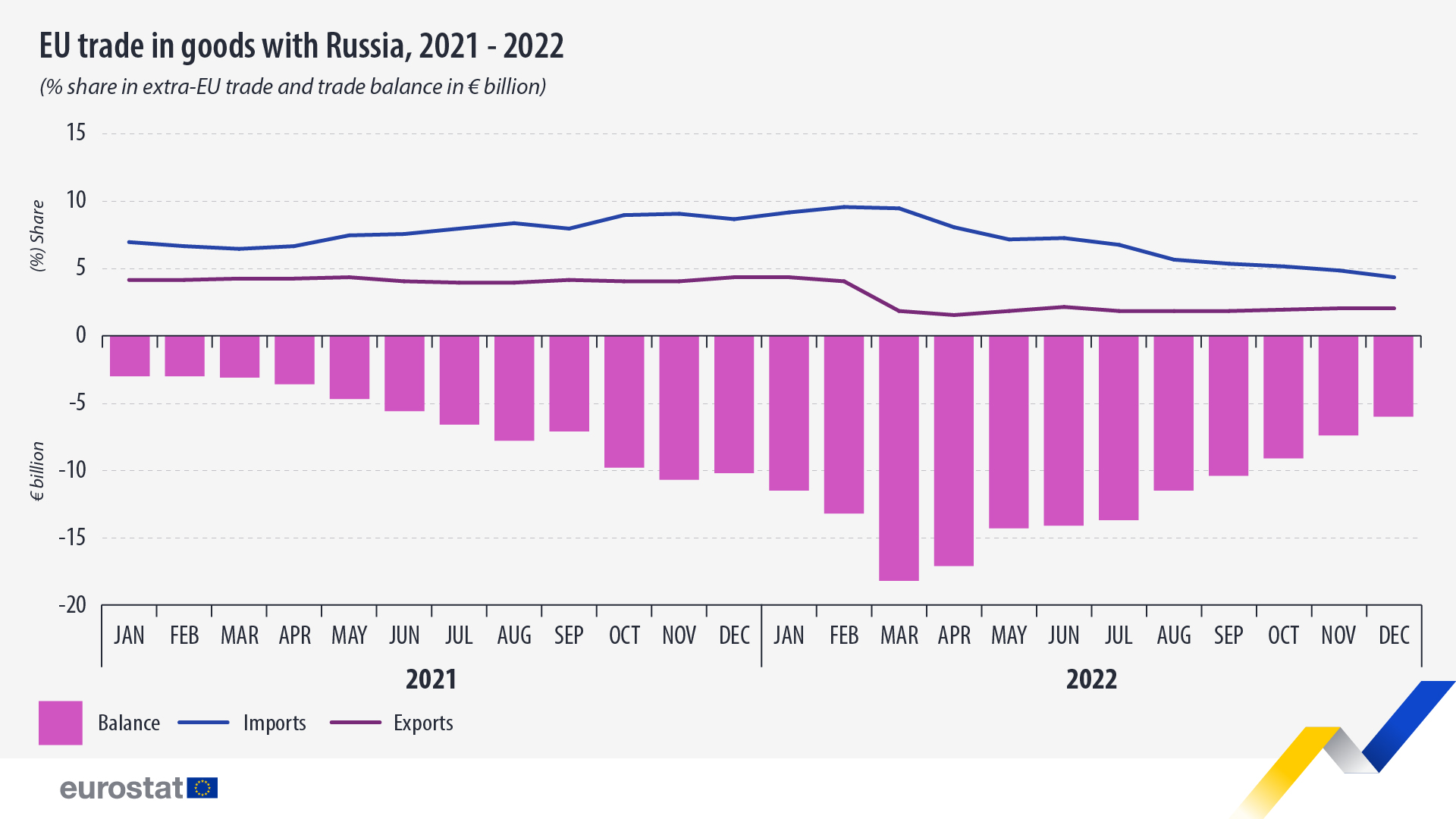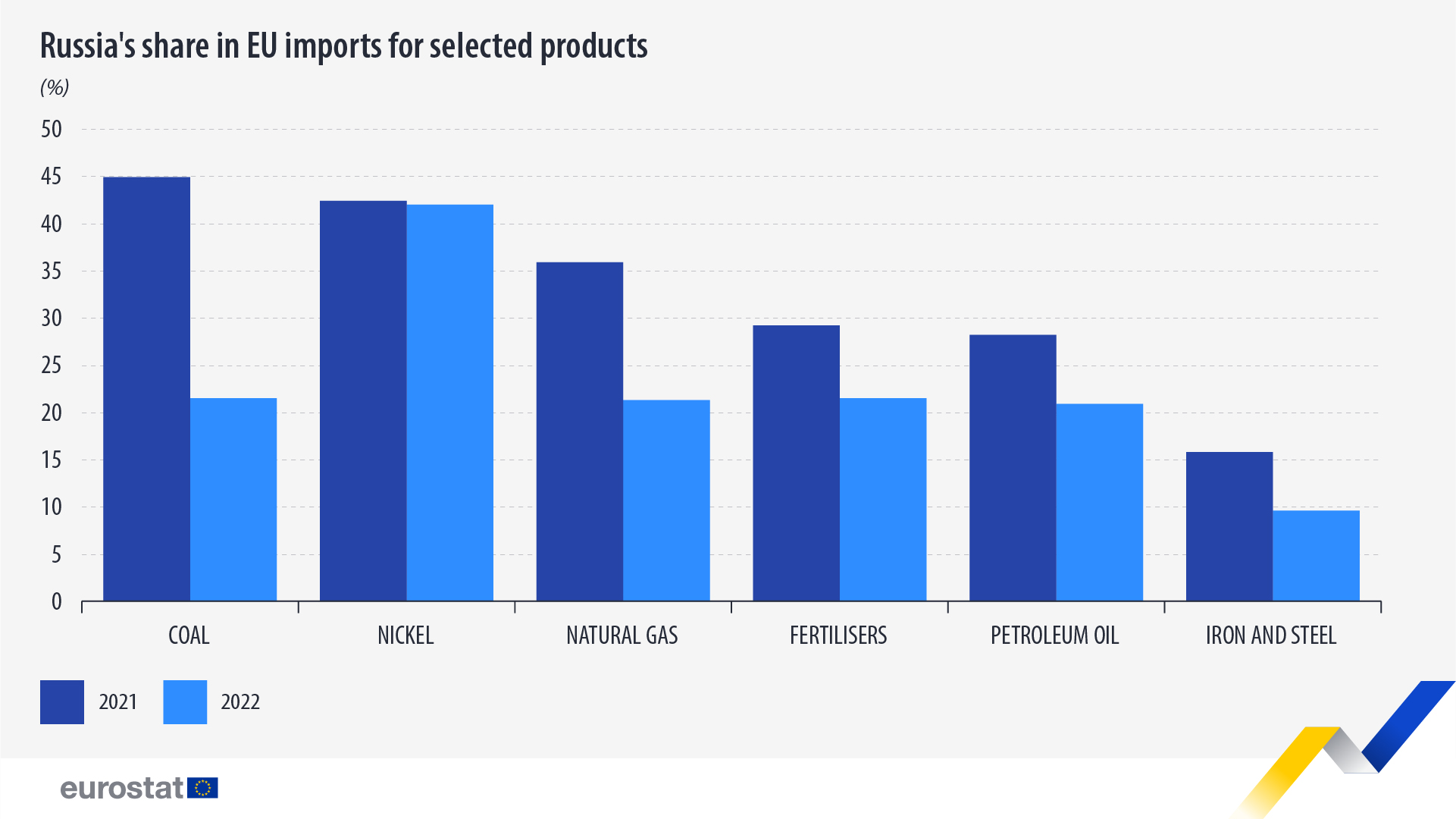RIA Novosti, in an article entitled “Trade turnover between the EU and Russia in 2022 was close to a record” , reports with somewhat unexpected optimism:
“The trade turnover between Russia and the European Union at the end of 2022 reached a maximum in eight years, while imports of goods from Russia turned out to be at a historical maximum,” RIA Novosti calculated based on Eurostat data.
The import of goods from Russia to the European Union increased by a quarter last year and reached 203.4 billion euros, which is only 230 million less than the historical maximum of 2012 (203.6 billion euros).
At the same time, exports from the EU to Russia fell by 38.1% to the lowest level since 2005 of 55.2 billion euros. However, such a decrease in Russia's import of goods from the EU did not prevent it from reaching the highest level of trade since 2014: it grew by 2.3% over the year to 258.6 billion euros.
As a result, the EU's deficit in trade with Russia at the end of the year was at the level of a record 148.2 billion euros, which is twice the figure a year earlier. <…>
As Vladimir Putin noted, the policy of containing and weakening Russia is a long-term strategy of the West, and its main goal is to worsen the lives of millions of people. Nevertheless, according to the head of state, it was not possible to undermine the financial stability of Russia, and Europe itself has reached a sanctions dead end.”

Calculating the total volume of trade for the year, propagandists from RIA basically do not take into account data by months. If we consider the dynamics of trade between the EU and Russia, it is obvious that all the growth took place at the beginning of the year – at the time before the start of a full-scale war.

Immediately after Russia's attack on Ukraine, exports from EU countries plummeted and have remained at about the same level ever since. Imports of Russian goods in March were still at a high level (obviously, due to previously contracted supplies of raw materials), after which they began to decline, by May they had decreased to about last year's level and continued to fall until the end of the year.
One of the main trends in EU trade policy has been to reduce dependence on Russian raw materials.

So, in 2021, about 45% of coal imports to the EU came from Russia, and in 2022 – only about 13%. Russia's share in gas imports decreased from 36% to 18% over the year, in oil imports – from 25% to 14%, fertilizers – from 29% to 16%.


By the end of 2022, Russian oil imports in absolute terms reached a historical low, gas imports only slightly exceeded the historical low of 2015. Apparently, the trend towards a reduction in trade turnover will continue in the near future; Last May, the European Commission announced plans to completely phase out oil and gas imports from Russia by 2027.


